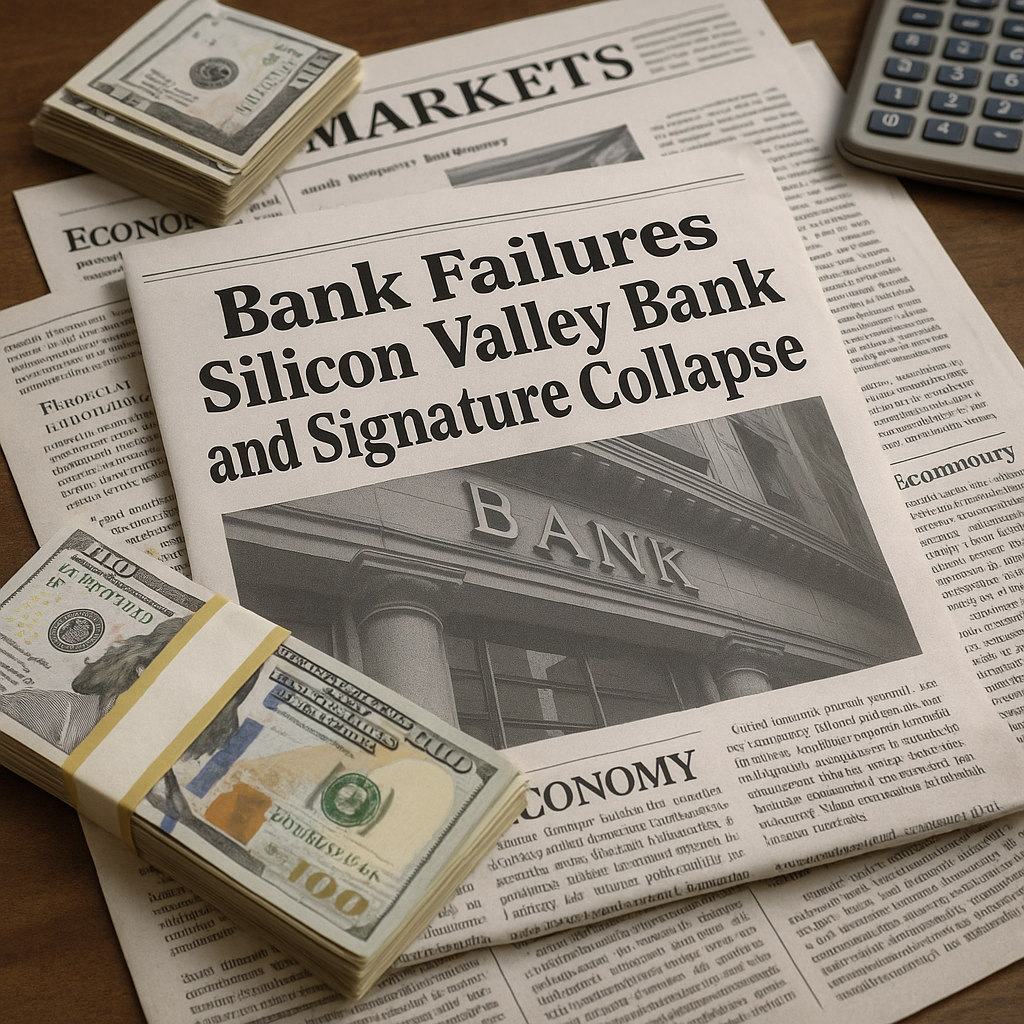Silicon Valley Bank and Signature Bank Collapse in March 2023
In March 2023, the U.S. financial system faced its most severe banking crisis since 2008. Within a matter of days, Silicon Valley Bank (SVB) and Signature Bank collapsed, sparking widespread panic across traditional finance, tech startups, and the crypto ecosystem.
The rapid failure of these banks revealed vulnerabilities in risk management, regulatory oversight, and liquidity exposure—particularly to high-growth tech sectors and digital assets.
The Collapse of Silicon Valley Bank
Founded in 1983, Silicon Valley Bank was a key financial institution for startups, venture capital firms, and tech companies. By early 2023, SVB had grown to become the 16th largest U.S. bank.
What Went Wrong?
SVB’s downfall was triggered by a combination of rising interest rates, concentrated deposits, and unhedged bond positions:
-
The bank invested heavily in long-dated U.S. Treasury and mortgage-backed securities.
-
As the Federal Reserve hiked rates, the value of those bonds dropped, creating large unrealized losses.
-
At the same time, startup funding slowed, and SVB’s tech clients began withdrawing deposits to cover operational costs.
-
In early March, SVB tried to raise capital to stabilize its balance sheet—this spooked the market and caused a classic bank run.
Within 48 hours, depositors withdrew over $40 billion. On March 10, regulators shut the bank down and placed it under FDIC receivership.
Signature Bank: Crypto Exposure Leads to Fallout
Just two days later, on March 12, Signature Bank was also seized by U.S. regulators. Unlike SVB, Signature had significant ties to the cryptocurrency sector.
Why Did Signature Fail?
-
Signature Bank was one of the few traditional banks providing services to crypto companies.
-
After the collapse of FTX, confidence in crypto-related banking partners plummeted.
-
Signature’s clients, fearing insolvency contagion, began pulling deposits rapidly.
-
Regulators cited a “crisis of confidence” and systemic risk, leading to the closure to prevent further panic.
Immediate Government Response
Faced with growing fears of a broader banking crisis, U.S. regulators took swift action:
-
The FDIC, Federal Reserve, and Treasury Department issued a joint statement guaranteeing all SVB and Signature deposits, including those above the $250,000 insurance limit.
-
The Fed also launched a Bank Term Funding Program (BTFP) to provide liquidity to other institutions holding long-term securities.
-
The goal was to stabilize markets, prevent contagion, and reassure both depositors and investors.
These extraordinary measures sparked heated debate about moral hazard and whether the system was once again bailing out reckless banking behavior.
Impact on the Financial System
The twin failures had far-reaching consequences:
-
Regional banks saw massive stock sell-offs and customer withdrawals.
-
Major U.S. banks experienced deposit inflows, as clients sought safety.
-
The Federal Reserve’s rate hike strategy came under pressure, with markets now pricing in a potential pause or reversal.
-
Credit tightening across the startup and tech sectors worsened, with VCs urging portfolio companies to diversify banking relationships.
Some analysts warned that trust in regional banking had been deeply damaged.
Ripple Effects on the Crypto Industry
The collapses also affected the cryptocurrency sector:
-
Signature Bank’s shutdown cut off a key on-ramp for many crypto platforms.
-
USDC, the second-largest stablecoin, temporarily lost its peg after Circle revealed it had over $3 billion stuck at SVB. It quickly recovered after the government guaranteed the funds.
-
Crypto prices initially dropped on contagion fears, but rebounded sharply following the Fed’s intervention.
Ironically, the crisis led some investors to view Bitcoin and decentralized finance as alternatives to the traditional banking system.
Regulatory and Political Fallout
The twin bank failures sparked renewed calls for:
-
Stricter risk management rules for mid-sized banks
-
Increased oversight of uninsured deposits
-
Clearer regulation for crypto banking
-
A re-examination of capital and liquidity buffers post-Dodd-Frank rollbacks
In Congress, hearings began almost immediately, with questions directed at both the Fed and the FDIC for failing to spot the risks in time.
Some critics argued that regulators missed warning signs visible for months, such as SVB’s bond portfolio duration risk and Signature’s overexposure to crypto clients.
Could This Happen Again?
While the crisis appears to be contained—for now—many observers believe structural vulnerabilities remain:
-
Banks heavily reliant on volatile deposit bases remain at risk
-
High interest rate environments continue to stress bond-heavy portfolios
-
Confidence in the stability of regional banks has not fully recovered
-
The blurred lines between tech, crypto, and finance demand more agile oversight
The March events served as a stark reminder that liquidity and trust are the lifeblood of banking. Once lost, they are incredibly difficult to regain.
Conclusion
The collapse of Silicon Valley Bank and Signature Bank in March 2023 marked a historic moment for U.S. finance and crypto. The failures not only exposed weaknesses in banking risk management but also forced a broader reckoning about regulation, systemic risk, and the fragility of interconnected markets.
Though markets have calmed for now, the events of March will likely shape policy, investor behavior, and public trust for years to come.
